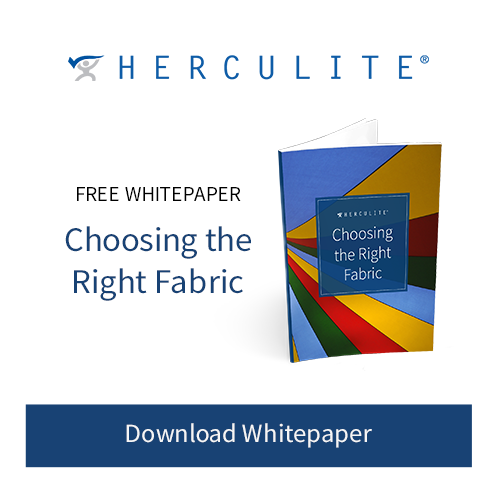 When we think of fabrics, we miss the fact that there are several types that are good for outdoor applications. Not every fabric can withstand the rugged outdoors or even just your backyard.
When we think of fabrics, we miss the fact that there are several types that are good for outdoor applications. Not every fabric can withstand the rugged outdoors or even just your backyard.
Outdoor fabrics are made to be stronger, coated with chemicals to help resist stain and mildew. When considering fabric for your outdoor project, there are several types. In this blog, we’re going to focus on fabric for a shade structure. But let’s briefly go over some of the commonly used types of fabrics for outdoor projects.
Vinyl-Polyester Composite: This fabric is an excellent choice for an outdoor shade structure or tent. Herculite Inc. offers this particular composite in its High Performance Tent and Structural Fabrics products. The composite is durable, can be coated for extra water and mildew resistance, ultraviolet ray resistant, and is low cold temperature flexible.
Solution Dyed Acrylic: This is a soft-to-the-touch fabric which is ultraviolet ray resistant, and doesn’t promote the growth of mildew. The fabric is water resistant and is great for awnings. However, like most things exposed to the sun long enough, the fabric can fade over time.
Spun Polyester: This is a tougher feeling fabric and also doesn’t promote mildew growth. This fabric is usually less expensive than solution dyed acrylic and has a shorter ultraviolet ray resistant lifespan than solution dyed acrylic material. The fabric should also be used in shaded areas. The fabric is weather resistant and with chemical coating, can last.
Canvas: This is a cotton or linen based fabric which is strong and made for heavy-duty use. Canvas is less used in tents, sails, and tarps because of low resistance to UV degradation. Canvas is also susceptible to mildew and mold because it is a natural fiber.
There are other types of outdoor fabrics out there, including olefin, cotton, and acrylic coated polyesters. For now, let’s just stick with the above list and talk about what your outdoor project might need.
Some things to consider for your outdoor project include:
Is the project going to be under a shaded area?
- This makes a difference in the type of fabric you want to use. If it’s going to be out in the sun all day, you want a fabric that has long lasting ultraviolet ray resistance. If it’s going to be in a shaded area and you’re going to store it when not in use, then UV ray resistance isn’t a top priority. Remember, the longer your outdoor project is exposed to the sun, the faster it will fade.
What climate is your project in?
- If your project is in a sunny area like the desert, then mildew resistance isn’t an essential feature you’re looking for. Rather, ultraviolet ray resistance should be high on your list. However, if you’re in a rainy climate, then the situation is reversed and you should look for mildew resistant materials and coatings.
What do you want your fabric to feel like?
- Some fabrics are rough-to-the-touch. Canvas and spun polyester can have tougher textures. If you want a softer feeling fabric then going with a solution dyed acrylic or a vinyl-polyester composite might work for your needs.
Whatever you’re looking for, it’s always important to do your research and find the right supplier for your project. Or, if push comes to shove, having your project custom engineered is a great way to have it done the way you want. Just remember, your outdoor project deserves the best fabric. Contacting an expert like Herculite Inc. to help you find the right material for your project is a step in the right direction.
Visit www.herculite.com for more information about our specialty fabric products.
